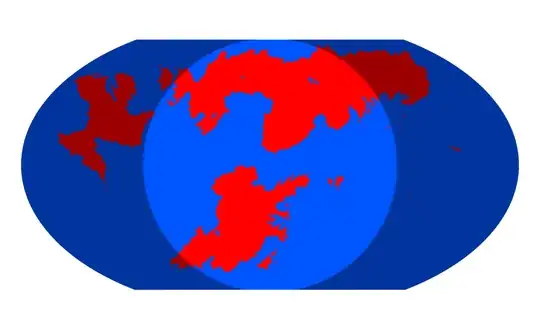By far the greatest forces your atmosphere and water are going to be moved by are thermal.
Things like the Coriolis force driving differential circulation (and various turbulent competing cells) in the different hemispheres will be negligible, the same with trade-winds.
You would get a permanent thermal rise at the centre of the map, the point where the star is overhead. This (or these, there's no reason it won't split just like at Jupiter's North pole, but less stable) will tend to rotate and produce rotating winds, but the direction, hardly affected by the Coriolis effect will be quite unstable - both in direction and they'll wander around.
Between the centre and the twilight-zone, the prevailing wind at ground level would be towards the centre, in the higher atmosphere, it would be away from the centre. Picture a big rolling doughnut of a light-side vortex.
Around the rim, the twilight-zone, there would be turbulence and instability where the cold-air meets the high-up hot air from the light-side. There would be downward-streaming air currents in swirling vortices - and just as at the midday point, they would be unstable and mobile. On perhaps an hourly basis, the temperature might vary by many tens of degrees Celsius.
Needless to say perhaps, the moisture will be carried away from the heated areas to the cold areas. I imagine a frozen ridge of precipitated snow over packed-ice, several kilometres high ranging several hundred kilometres past the twilight-zone. There would be continuous melt-water producing lakes and rivers flowing towards the light-side - inevitably evaporating before reaching a "Sea". Desiccated salt-pans would form in depressions over much of what might once have been oceans
